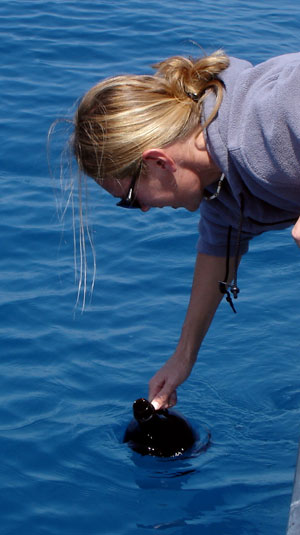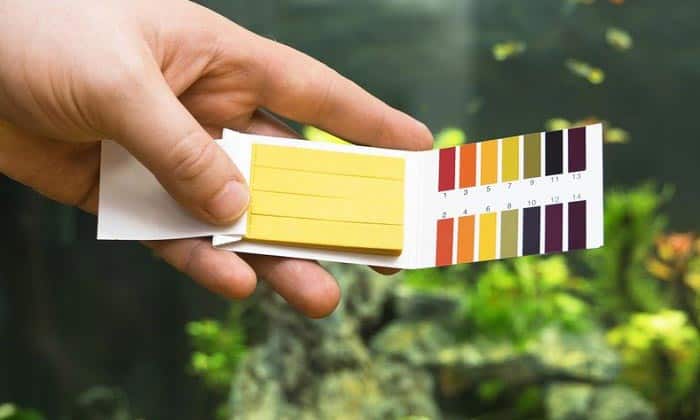Drinking Water Report
Making safe drinking water
The U.S. Environmental Protection Agency sets safe drinking water standards. These standards limit the amounts of specific contaminants allowed in drinking water. This ensures that tap water is safe to drink for most people. The U.S. Food and Drug Administration regulates the amount of certain contaminants in bottled water. Bottled water must provide the same public health protection as public tap water.
Drinking water, including bottled water, may reasonably be expected to contain at least small amounts of some contaminants. The presence of contaminants does not necessarily indicate that water poses a health risk.
How to read the water quality data tables
The tables below show the contaminants we found last year or the most recent time we sampled for that contaminant. They also show the levels of those contaminants and the Environmental Protection Agency’s limits. Substances that we tested for but did not find are not included in the tables.
sample for some contaminants less than once a year because their levels in water are not expected to change from year to year. If we found any of these contaminants the last time we sampled for them, we included them in the tables below with the detection date
Definitions
EPA Environmental Protection Agency
MCL (Maximum contaminant level): The highest level of a contaminant that is allowed in drinking water. MCLs are set as close to the MCLGs as feasible using the best available treatment technology.
MCLG (Maximum contaminant level goal): The level of a contaminant in drinking water below which there is no known or expected risk to health. MCLGs allow for a margin of safety.
Level 1 Assessment: A Level 1 assessment is a study of the water system to identify potential problems and determine (if possible) why total coliform bacteria have been found in our water system.
Level 2 Assessment: A Level 2 assessment is a very detailed study of the water system to identify potential problems and determine (if possible) why an E. coli MCL violation has occurred and/or why total coliform bacteria have been found in our water system on multiple occasions.
MRDL (Maximum residual disinfectant level): The highest level of a disinfectant allowed in drinking water. There is convincing evidence that addition of a disinfectant is necessary for control of microbial contaminants.
MRDLG (Maximum residual disinfectant level goal): The level of a drinking water disinfectant below which there is no known or expected risk to health. MRDLGs do not reflect the benefits of the use of disinfectants to control microbial contaminants.
NA (Not applicable): Does not apply.
NTU (Nephelometric Turbidity Units): A measure of the cloudiness of the water (turbidity).
pCi/l (picocuries per liter): A measure of radioactivity.
ppb (parts per billion): One part per billion in water is like one drop in one billion drops of water, or about one drop in a swimming pool. ppb is the same as micrograms per liter (μg/l).
ppm (parts per million): One part per million is like one drop in one million drops of water, or about one cup in a swimming pool. ppm is the same as milligrams per liter (mg/l).
PWSID: Public water system identification.
TT (Treatment Technique): A required process intended to reduce the level of a contaminant in drinking water.
Variances and Exemptions: State or EPA permission not to meet an MCL or a treatment technique under certain conditions.

Water Quality Update
The water is now testing at 6 parts per billion (ppb) which is much lower than the federal requirement of 15 ppb. Flint’s water is one of the most monitored and testing the same as similar cities across the state and country.
Why did the PODs close?
the water distribution locations over the past seven months and partnered with the City, local churches and other non-profit partners, the Food Bank, and the United Way to keep bottled water available until even greater amounts of water quality testing throughout the community could occur.
Will filters and water test kits continue to be available?
Yes. The state will continue to provide free water filters, replacement cartridges, and water testing kits until service line replacement is completed. Filters will continue to be available for residents who feel more comfortable using a filter until their confidence in the water quality can be re-established. Filters and residential sampling kits are available at City Hall.
How do I know filters work?
Water filters are effective at removing lead and other contaminants by 99.9 percent when properly installed and adequately maintained. The U.S. EPA and CDC (Centers for Disease Control and Prevention) tested water filters and found that NSF-certified filters distributed by the state make water safe from lead for everyone.
Water Resources
Critical clean water resources like bottled water, water filters, and water testing kits are available for free
Water quality
Water quality describes the condition of the water, including chemical, physical, and biological characteristics, usually with respect to its suitability for a particular purpose such as drinking or swimming
Water quality is measured by several factors, such as the concentration of dissolved oxygen, bacteria levels, the amount of salt (or salinity), or the amount of material suspended in the water (turbidity). In some bodies of water, the concentration of microscopic algae and quantities of pesticides, herbicides, heavy metals, and other contaminants may also be measured to determine water quality.
Although scientific measurements are used to define water quality, it is not a simple thing to say “that water is good” or “that water is bad.” So, the determination is typically made relative to the purpose of the water – is it for drinking or to wash a car with or for some other purpose?
Poor water quality can pose a health risk for people. Poor water quality can also pose a health risk for ecosystems.
good water quality is essential to a healthy marine ecosystem. Seagrass and coral reef communities thrive in clean water that is relatively low in nutrients. Too many nutrients in the water can cause excess growth of algae, which can smother corals and seagrass. Pollutants such as metals, oils, pesticides, and fertilizers run off from land into the waters, causing excess algae growth and other harmful impacts.
Things You Should Know About Water
water is taken for granted because it’s readily available, of good quality, and very cheap. We turn on the tap and it’s always there. The thought of water rationing might as well be ancient history to those that were born after the 1970s
uses more water per capita than most first world cities.
According to the Water Supplies Department (WSD), total water use in 2009 (both fresh water and salt water) was 3,350 million litres a day1. unlike most other major cities, uses salt water for flushing, so from that total fresh water accounted for 2,608 million litres and salt water 742 million litres. This amounts to an annual per capita consumption of 172.1 m3, making one of the highest water consumers per capita when compared to other advanced cities.
water tariffs are one of the lowest in the world.
water is cheap compared to other major cities in the world. In fact, the first 12m3 of water used every four months is free for all domestic users
With a relatively high GDP per capita, water could be priced higher, however as figure 3 illustrates, drinking water price is actually very low relative to its GDP when compared to other countries.
If we take a look at the absolute price from around the world (figure 4), again we can see that water tariffs are relatively low.

The Best Aquarium Water Test Kits
For all aquarium hobbyists, it is crucial to be able to sustain and keep track of the levels of distinct elements inside the tank and this can only be done if you invest in the best aquarium water test kits available on the market today.
The water in the tank needs to remain clean and safe since we have various fish species and other aquatic creatures dwelling in it. And, as their owner, it is our responsibility to provide them the best possible hub where they can safely and healthily thrive.
Test kits that are particularly designed for aquariums help aquarium keepers to control magnesium, ammonia, iodine, nitrates, carbon, nitrites and pH levels in the tank. It is worth noting that these elements are hazardous and could even be fatal to your aquarium pets.
And, because tap water is used when we fill the tank, thus, these test kits do a great job in measuring the levels of these dangerous elements. Indeed, these readings are quite useful when it comes to making guesstimate while introducing vital minerals.
API Freshwater Master Test Kit
If you are presently searching for the best aquarium test kit, then API Freshwater Master is the ultimate kit that can satisfy your expectations. You can finally examine your tank and tap water and measure the levels of nitrates, nitrites, pH, ammonia and high range pH present in your aquarium.